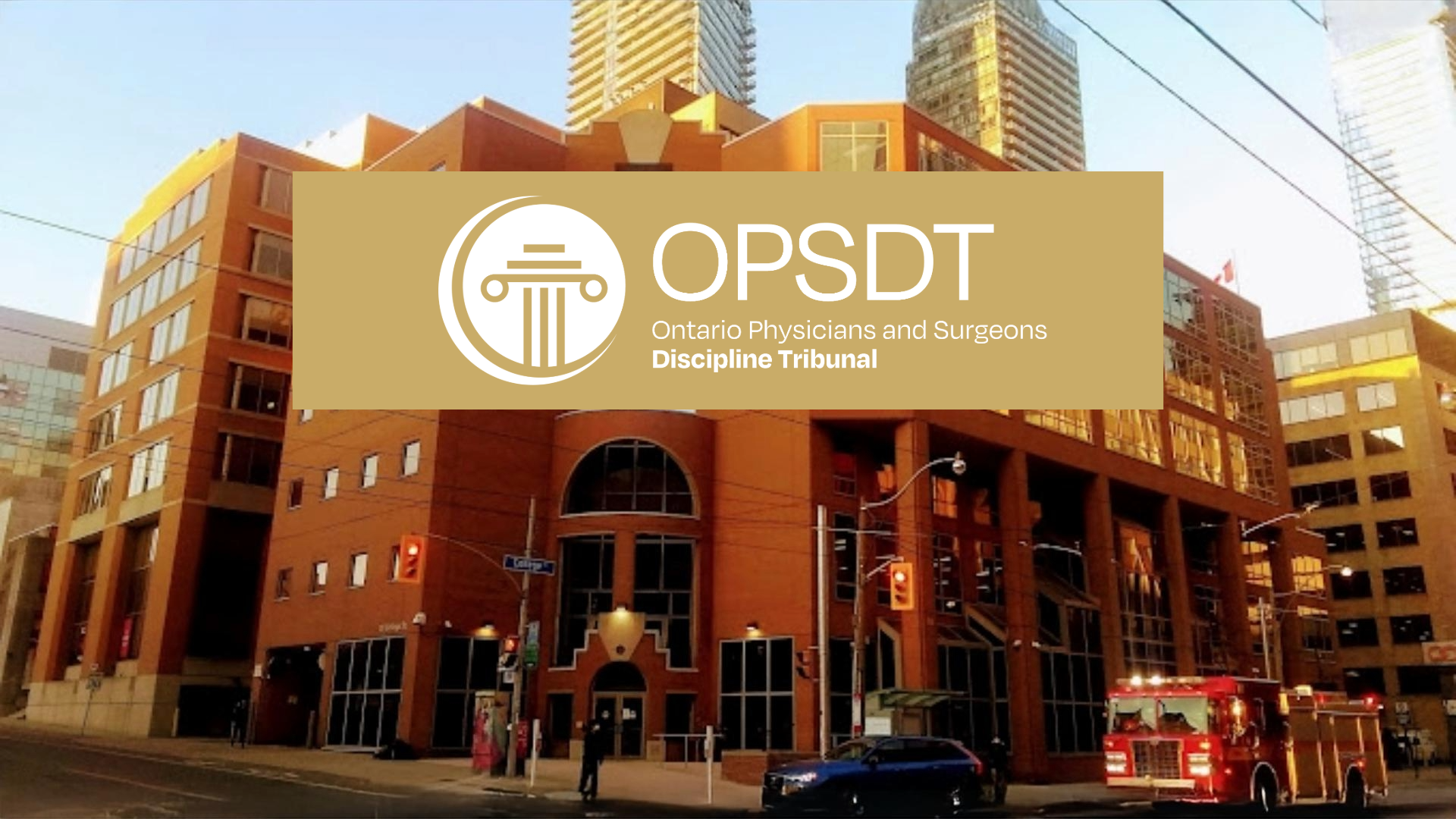On April 5, 2024, the Court of Appeal for Ontario dismissed the appeal of neurologist Dr. Marshall Zaitlen who had been found negligent at trial before a jury for failing to order further investigations in the face of a deteriorating condition that ultimately led to a delayed diagnosis of a thoracic spinal dural arteriovenous fistula. The patient, Mr. Henry, was left with significant disability as a result.
FACTS
On January 27, 2010, Mr. Henry attended in the emergency room of the Brampton Civic Hospital (the “Hospital”) complaining of lower back pain, numbness down the left leg and pelvic area, and difficulty urinating and voiding. Magnetic resonance imaging (MRI) of his lumbar or lower spine showed enhancement of the conus (the terminal end of the spinal cord) and of the cauda equina nerve roots below the conus. An internal medicine specialist examined Mr. Henry on January 28, 2010 referred him to the Defendant physician, Dr. Zaitlen, “on an urgency basis”.
Dr. Zaitlen saw Mr. Henry for the first time on January 29, 2010. Dr. Zaitlen described the case as an “[e]mergency referral … for a new onset sensory loss over the perineum and the bowel and bladder and sensory and motor loss over the lower limbs”. He noted that there was “no exposure, injury or infections or anything else we could find as a trigger”. Dr. Zaitlen considered that there were four possible explanations for Mr. Henry’s complaints: trauma, infection, inflammation, or cancer. Dr. Zaitlen sent Mr. Henry for a lumbar puncture to obtain a sample of his spinal fluid and wrote that he would follow up with him.
Dr. Zaitlen saw Mr. Henry for a second time on February 12, 2010, two weeks after the first visit. Mr. Henry reported pain, particularly in the lower back, hip, and armpit. Mr. Henry’s symptoms had not resolved but were, according to Dr. Zaitlen’s note that day, “at least stable”. Spinal fluid testing had ruled out cancer and narrowed the likelihood of infection. There was little evidence of trauma. Although Mr. Henry had a high white cell count, he did not have meningitis. Some test results were still pending. Dr. Zaitlen did not order further tests at the February 12, 2010 appointment, instead electing to continue to follow up with Mr. Henry to assess him clinically.
Dr. Zaitlen saw Mr. Henry for a third time on March 5, 2010. Mr. Henry continued to have numbness in his saddle area, muscle twitching and spasms, stiffness in his lower back, pain in his hip and buttock, and sensory discomfort in his leg. His symptoms were still neither worsening nor getting any better, in Dr. Zaitlen’s view. Mr. Henry continued to suffer from an “unusual condition”, the diagnosis for which remained unclear. Dr. Zaitlen ordered five more tests, including a repeat MRI of Mr. Henry’s lower back and an MRI of his head and cervical or upper spine. He also referred Mr. Henry to a neurologist specializing in autoimmune inflammatory disease.
Mr. Henry underwent an MRI of his head and cervical spine on March 14, 2010, the results of which were normal. He underwent a second MRI of his lower spine the next day, which showed the same abnormality of the conus and cauda equina nerve roots seen on the lumbar MRI in late January.
Dr. Hilarie Sheehan, the radiologist who interpreted the March 15 MRI results, noted in her report that Mr. Henry was “not improving” and that his condition remained undiagnosed. Since his head and cervical spine had been evaluated, she wrote that “formal imaging of the thoracic spinal cord may also be warranted to exclude abnormality at that level.”
On March 23, 2010, Mr. Henry returned to the Hospital’s emergency room. According to the ER record, he reported an “acute worsening” of the numbness and leftness in his left leg, leaving him able to walk only with difficulty. He also reported an episode of difficulty voiding, a problem which he said had happened on and off since late February 2010. After Mr. Henry was examined by an ER physician, he was discharged home for continued follow up with Dr. Zaitlen.
Dr. Zaitlen received the March 14 and 15 MRI results, a copy of Dr. Sheehan’s report, and a copy of the March 23 ER record. Dr. Zaitlen did not take any steps to contact Mr. Henry or have him reattend, nor did he order any further investigations, notably an MRI of Mr. Henry’s thoracic (or mid-level) spine.
Mr. Henry’s condition continued to deteriorate. He had lower limb weakness, loss of bladder and bowel control, and pain and unusual sensations up to the level of his belly button. On July 20, 2010, Mr. Henry returned to the Hospital by ambulance, now in a state of paraplegia.
Since Dr. Zaitlen was on vacation, Mr. Henry was assessed by another neurologist, Dr. Michael Angel. Dr. Angel conducted a lumbar puncture and ordered an MRI of Mr. Henry’s thoracic spine, given his “clear upper motor neuron features”. The radiologist who interpreted the MRI on July 20, Dr. Robert Kurtz, found the results were “highly suspicious for a dural AV fistula within the mid thoracic region” and another consulting neurologist, Dr. Brian Best, agreed. Mr. Henry was sent to the Toronto Western Hospital. The spinal dural arteriovenous (“SDAV”) fistula diagnosis was confirmed on July 22 with a further MRI and consultation with an interventional neuroradiologist, Dr. Timo Krings.
An SDAV fistula is an abnormal connection between a vein and artery that impairs the flow of blood and nutrients to the spinal cord. It is a potentially serious but rare condition, particularly for a person in his thirties like Mr. Henry when it was diagnosed.
The fistula in Mr. Henry’s spine was surgically repaired on July 25, 2010. Mr. Henry underwent physical therapy and recovered his ability to walk. When examined on July 2019, however, his legs remained weak and spastic. He had difficulty walking and little stamina or tolerance of exercise. He also had severe problems with bladder and bowel control and severe constipation. At the trial in late 2021, Mr. Henry testified that he still had nerve pain in his legs and pelvis and leg spasms. His gait remained uneven, because his left leg was much weaker than his right, and he required help over distance. He continued to have bowel and bladder symptoms that significantly impacted his day-to-day activities. He required ongoing therapy and medication. He had not returned to work.
Mr. Henry’s theory of liability was that Dr. Zaitlen breached the standard of care by failing to investigate the cause of his condition after receiving Dr. Sheehan’s report suggesting thoracic spinal cord imaging in mid-March 2010 and learning of Mr. Henry’s trip to the emergency room with worsening symptoms a week later. Had thoracic spinal cord imaging been performed at that time, or at any time prior to July 2010, Mr. Henry’s SDAV fistula would have been detected and diagnosed before he became paraplegic, and he would have recovered much more function after the fistula was repaired.
Dr. Zaitlen’s position was that he did not breach the standard of care of a reasonable neurologist, given the difficulty in diagnosing an SDAV fistula, the rarity of this condition in a man of Mr. Henry’s age, the absence of specific clinical symptoms suggesting an SDAV fistula prior to July 2010, and aspects of Mr. Henry’s presentation inconsistent with this diagnosis. At worst, Dr. Zaitlen argued that his failure to order thoracic imaging was an error of judgment.
The trial judge gave the jury lengthy instructions, which reflected the parties’ submissions at the pre-charge conference. The instructions included a summary of the evidence.
After deliberating for three days, the jury returned a verdict in Mr. Henry’s favour. It awarded him general damages, past income loss, future income loss and future care costs totaling just under $1.5 million.
GROUNDS OF APPEAL
The physician raised three grounds of appeal:
- The jury’s finding that he breached the standard of care is unreasonable and unjust, given the evidence at trial;
- The jury’s answers reveal that it did not act judicially; and
- It was not open to the jury to make the future damages award that it did.
ANALYSIS and DECISION
The Court of Appeal dismissed the physician’s appeal for the following reasons:
- A jury could reasonably find that the physician breached the relevant standard of care, relying on the evidence of the patient’s expert neurologist and rejecting the opinions of the appellant’s neurology experts on the standard of care;
- Approaching the jury answers holistically reveals a rational chain of reasoning. In explaining how Dr. Zaitlen breached the standard of care, the jury first made a general observation that he did not continue to investigate from March to June 2010. It then indicated more specifically what he should have done to investigate during this period: he should have communicated with Mr. Henry and ordered thoracic imaging. In its explanation on causation, the jury began by stating that Dr. Zaitlen’s breach gave rise to a “delay in diagnosis, lack of communication, instruction and planning”. It then referred to how this impacted Mr. Henry in the short term. It concluded that, had the diagnoses been made before June 2010, Mr. Henry would “have been in a more favourable position for treatment and recovery with likely fewer deficits”.
- It was open to the jury to find, based on the evidence with respect to Mr. Henry’s injuries, that he was able to return to work full-time at some point after his surgery but that he would retire early. That is what the jury did. Its future income loss award presupposes that Mr. Henry expected to work until the age of 68 but will now instead retire at the age of 57.
Decision Date: April 5, 2024
Jurisdiction: Court of Appeal for Ontario
Citation: Henry v. Zaitlen, 2024 ONCA 243 (CanLII)



